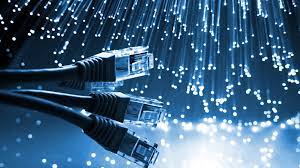If you want to share your storage across a network, or think you might in the future, connecting devices directly to a PC isn’t the best option. This week, we look at several options for networked storage.
by Joseph Moran
When it comes to sharing storage on a network, there’s a better way to do it than going through a PC.
When you’ve got a PC with a hard drive bursting at the seams and need more storage, many of you would understandably rather not have to crack open the case to install a new hard drive. The solution in this case is pretty simple, since you can easily add storage by using an external hard drive that connects to the PC via USB, FireWire, or increasingly, even eSATA.
But if you want to share your storage across a network, or even think you might in the future, connecting storage directly to a PC may not be the best option. This week, we’ll take a look at several ways to set up networked storage.
Windows File Sharing
Just as with a PC’s internal hard drive, you can share the contents of an external drive with other systems through Windows by right-clicking the icon for a drive (or just a specific folder) and choosing Sharing and Security. But whether the drive is internal or external, networking PC-based storage has several significant drawbacks.
First, the system hosting the shared storage must, of course, be on and working properly for that storage to be available on the network. That may not seem like a particularly high bar to meet, but should someone inadvertently turn the system off or should it suffer a blue screen or have some other problem (not exactly an unusual occurrence when dealing with Windows, after all) no one will have access to the storage.
This kind of PC-based storage sharing also effectively prevents you from taking advantage of power- (and money) saving standby and hibernation modes on the system. A final issue to consider is performance, because if a networked user is accessing the shared storage, say, streaming a video from or copying a file to the system, it could have a noticeable slowdown for the person actually sitting in front of that system.
Get Your NAS in Gear
Using a Network- Attached Storage (NAS) device is a better way to provide storage in a networked environment. NAS devices are similar to external hard drives, except that they connect directly to your network instead of to a specific PC (the network connection is usually via wired Ethernet, though there are a handful of NAS products with built-in Wi-Fi).
A NAS device will usually cost more than an external drive of the same capacity, sometimes significantly more depending on the features provided. But the big benefit of setting up a NAS device is that it provides storage that’s independent of any PC. NAS devices look just like a networked PC in Windows, so the folders they contain can easily be mapped to drive letters on any system that needs them. NAS devices also typically offer a great deal of control and flexibility when it comes to managing shared folders and setting up specific access rights for different people.
NAS devices are available in relatively inexpensive single-drive units, but there are also two- three- and four-drive models that offer considerably more storage than any solitary hard drive can (which may be important when several people are sharing it). Having multiple drives also allow NAS devices to safeguard data by providing redundancy in the form of RAID 1 or RAID 5. (This capability isn’t exclusive to NAS devices as some external hard drive products contain two or even four separate drives.)
Expanding the capacity of a NAS drive isn’t always easy, because adding or changing drives inevitably involves device reconfiguration that erases existing data. Some NAS devices do make expansion possible by providing one or more USB ports that allow you to add capacity by connecting external hard drives right to the NAS device. NAS devices that offer USB ports often allow you to use them to connect a printer that can also be shared across the network.
Adapting for Network Storage
We’ve discussed the advantages of NAS over external hard drives when it comes to network storage, but if you’d like to get the many of the benefits of NAS using ordinary external hard drives (including some you may already own), consider a network storage adapter such as the DNS-120 from D-Link.
Network storage adapters don’t usually provide any inherent storage, but like many NAS devices, let you plug in USB external hard drives so they’ll be accessible across the network. The catch is that you may have to re-format existing drives before you can use them, which means you’ll have to back up your data somewhere first.
Joe Moran is a regular contributor to PracticallyNetworked.




